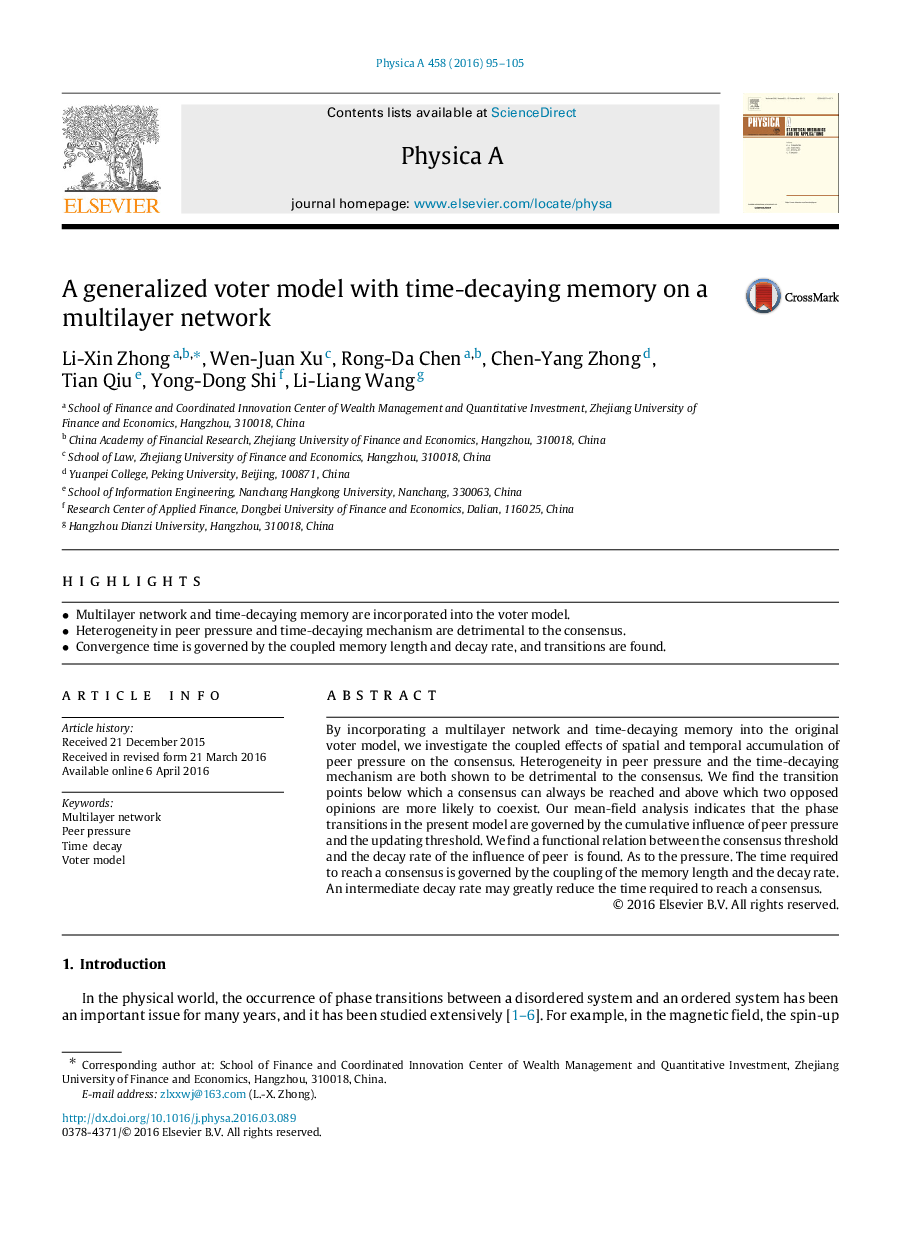| Article ID | Journal | Published Year | Pages | File Type |
|---|---|---|---|---|
| 974344 | Physica A: Statistical Mechanics and its Applications | 2016 | 11 Pages |
•Multilayer network and time-decaying memory are incorporated into the voter model.•Heterogeneity in peer pressure and time-decaying mechanism are detrimental to the consensus.•Convergence time is governed by the coupled memory length and decay rate, and transitions are found.
By incorporating a multilayer network and time-decaying memory into the original voter model, we investigate the coupled effects of spatial and temporal accumulation of peer pressure on the consensus. Heterogeneity in peer pressure and the time-decaying mechanism are both shown to be detrimental to the consensus. We find the transition points below which a consensus can always be reached and above which two opposed opinions are more likely to coexist. Our mean-field analysis indicates that the phase transitions in the present model are governed by the cumulative influence of peer pressure and the updating threshold. We find a functional relation between the consensus threshold and the decay rate of the influence of peer is found. As to the pressure. The time required to reach a consensus is governed by the coupling of the memory length and the decay rate. An intermediate decay rate may greatly reduce the time required to reach a consensus.
